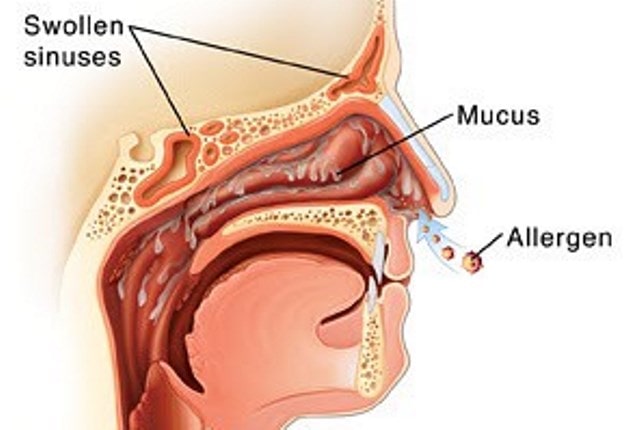Cutting cuticles is commonly offered during manicure and pedicure. There are also videos and articles galore on the internet to show you how to cut cuticles “safely” at home. Some people even claim that trimming the cuticles make the nails grow faster, but is cutting cuticles good (safe) or bad?. Let us examine the real truth behind these claims.
Dangers of Cutting Cuticles
The myth that cutting cuticles make nails grow faster is just that; a myth, says Richard Scher, MD, a professor of dermatology at Cornell University. The real reason why beauticians at nail salons cut cuticles is to make the nail plate longer. There is nothing more than this aesthetics value. Also contrary to the popular belief, it is not about whether or not you cut them too short or too deep, it is about cutting them at all in the first place. Below are some of the dangers associated with cuticle trimming:
Infection
Although cut cuticles grow back, the habit exposes you to the risk of infection not to mention cut cuticles hurt and may even bleed.
The risk of infection is two-fold. First, there is the risk of getting infected by instruments that are not properly cleaned and sterilized. Secondly, cutting cuticles breaks the protective barrier against bacterial invasion in the skin surrounding the nails. “Our cuticles connect the skin around the nail to the nail plate to protect them from infection,” says Janet Prystowsky, MD, a board certified dermatologist based in New York.
Dr. Scher agrees saying, “If you remove the cuticle, that space is wide open, and anything can get in there”.
Cases of cuticle infection, paronychia, due to cuticle cutting or any other purpose often resolves with the administration of antibiotics.
Related article: Sore Cuticles Causes and Treatment
Nail and Cuticle Problems
In addition to bacterial infection, the WebMD says that trimming cuticles can cause various problems with the fingernails or toenails including ridging, white spots, and white lines. With bacterial infections, nail growth may also be impeded. Therefore, cutting cuticles will not at all make the nails grow faster as the common myth goes but essentially put them at risk of hampered growth.
According to Dr. Ella Toombs, a dermatologist practicing in Washington, D.C., violating the cuticle also makes them prone to problems such as splitting. “They’re [cuticles] supposed to be soft, and cutting can make them hard, more likely to fracture. If you cut it, it has an increased tendency to split off,” Toombs explains.
In the light of these dangers, especially infection, it is not surprising that cutting cuticles with a nail or cuticle trimmer – or any other equipment – is not only disallowed but illegal in some US states e.g. New York.
The usefulness of those nail clipper goes as long as trimming of hangnails is concerned. Just as you shouldn’t pick at hangnails (only trim them gently with nail clippers or scissors) to avoid their tearing, you shouldn’t cut the cuticles (only push them back) to avoid pain, infection etc.
Alternatives to Cuticle Cutting

Now that you know that cutting cuticles off is bad, you may be wondering what alternative solutions there are. After all, trimmed cuticles helps to make your nails longer and give your hands a more polished look, doesn’t it?
Nail care pros and doctors alike agree that pushing cuticles back is safe and just effective in doing what trimming is meant to do; elongate the nail plate.
As regards the best way to push the cuticles back, moisturize them with olive oil, petroleum jelly, or any other moisturizer – preferably after shower or bath – for a few minutes, then push them back gently with an orange stick (a commercially available wooden – not metallic – stick with a flat, pointed tip). According to Simcha Whitehill, a nail pro in New York City who is popularly known as Miss Pop, soaking your hands in warm water long enough to soften the cuticles also helps.
After pushing the cuticle back, you can then clip any piece of dead skin left behind. Buffing with a washcloth (or a terry cloth) can also help to remove excess skin.
The Trap of Cuticle Cutting
In spite of the risk of infection and other problems, salons continue to offer cuticle trimming as part of the manicures and pedicures simply because they know their clients like the way their nails look after the treatment.
That is not the worst part either. When trimmed, cuticles not only become ragged but grow back fast and sometimes thicker, requiring another trim in just a week or so. Simcha Whitehill, a nail pro in New York City who is popularly known as Miss Pop, likens the appearance of the cuticles that grown back after trimming to the gill of a fish.
Once you start doing it, you may find yourself caught up in an endless cycle of cuticle cutting, constantly posing the danger of cuticle infection and other problems.
As Tee Hundley, celebrity manicurist and a contributor at Pedicure.com says, the “nail elongation” effect can be achieved by just pushing the cuticles back, followed by gentle trimming of the residual skin as necessary.
Conclusion
Whether done at nail salons during manicure by a pro or at home, cutting cuticle is bad. As you will probably agree, the pros and cons are out-balanced in favor of the disadvantages. There is absolutely no reason to expose your fingernails or toenails to the dangers discussed in this article when pushing the cuticles back will just as well do the trick. Just speak up and let your manicurist know you are not comfortable with it.
References
- Cosmopolitan: Why You Should Never, Ever Cut Your Cuticles
- WebMD: How To Take Care Of Your Cuticles
- GoodHouseKeeping: Why You Should Never Cut Your Cuticles
- Huffington Post: To Cut Cuticles or Not? Dermatologists Tell Us How To Answer The Manicurist


